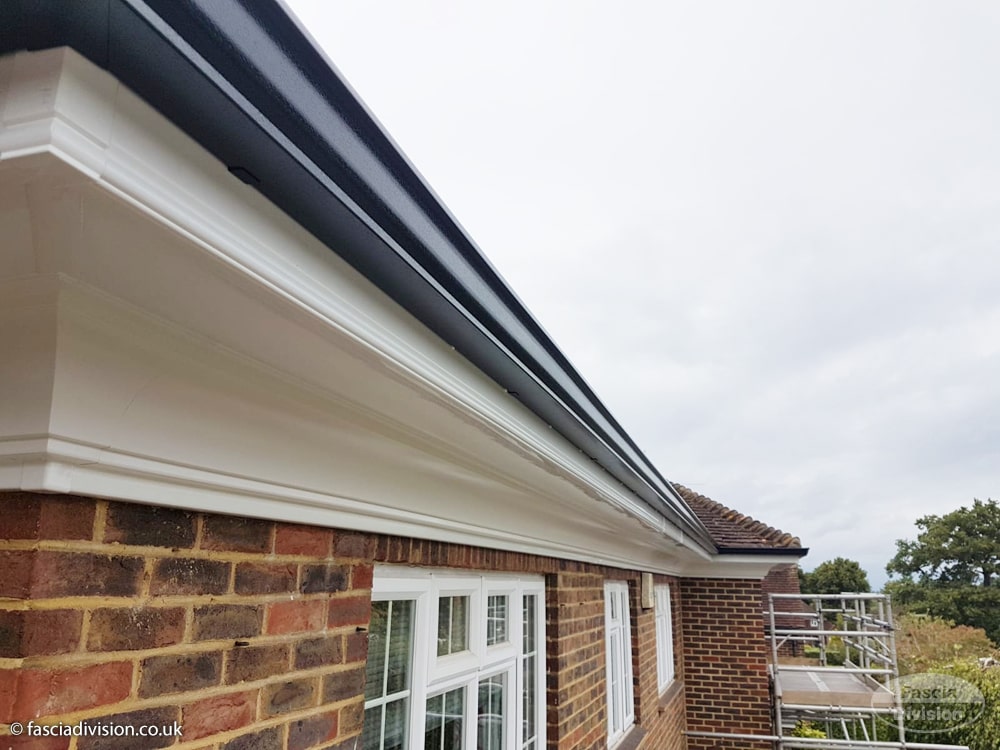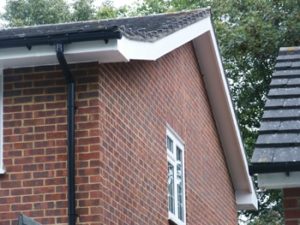15 Interesting Facts About Fascia And Soffits Replacement Near Me You …
페이지 정보

본문
 Soffit and Fascia Replacement Near Me
Soffit and Fascia Replacement Near MeSoffits are crucial to the health of your home. They help to prevent rot, mold, and pests, and also provide ventilation to your attic. They also give your roofline an attractive look.
Repair any damaged soffit and fascia immediately. Be aware of signs of discoloration or gnaw marks.
Deteriorated or damaged
The appearance and performance of your home's fascia is crucial, regardless of whether it is made of aluminum, wood or vinyl. They provide a finished appearance to roof overhangs. They draw moisture and air from the attic, and help protect the roofing and trim made of wood beneath it from weather-related damage. In time, they could be damaged or degraded and cause damage to your home's roof and.
Soffits that are damaged or degraded fascia and soffit repair near me can lead to various issues, including the growth of mold and water infiltration. The damage to your roof could also compromise the structural quality of your home. In addition, pests and rodents may gain access to the attic, where they can create nests or cause further damage.
There are a variety of professionals who can do repair of fascias and soffit, including gutter specialists, roofers, and carpenters. Ask about their work history and experience when searching for a professional. It is crucial to select a professional who is licensed, experienced and reliable. This will ensure that the soffit, fascia and gutters are put in place and repaired correctly.
Fascias and soffits aren't the best DIY projects for homeowners as they require working from a ladder or on the roof. Working from a roof or ladder could be hazardous and the tasks are complex. Most homeowners do not have the necessary tools or know-how to perform these tasks. A professional's help can ensure the job is done right and that your fascia and soffit can endure the elements for a long time.
Discoloration, cracks, and gaps are all signs that your fascia or soffit needs to be fixed. You should check them regularly for any of these issues and for insect or rot-related issues. Inspection of your fascia and soffit can be simple, since it is usually visible from a distance. You can also check for gnawmarks or droppings as well as nesting material which are signs of pest or rodent activity. If you find any of these issues, call an expert to arrange soffit and fascia repairs immediately.
Infestations
Soffits and the fascia can help protect your roofline against water damage. Soffits are situated on the underside of an overhang. They help to ventilate the attic, draw moisture away from the house, and deter pests. Like other components of a roofing system, they are not immune to wear and tear or environmental issues. Soffit and fascia are also vulnerable to insect attacks. If you spot any telltale signs it's crucial to fix your soffit or fascia as soon as you can.
The primary function of fascias is to shield the roof's edge from the elements and direct rainwater away from your eaves and foundation. It also supports gutter installations and serves as an anchor point for downspouts. It's also common for wood fascia to be damaged by water when cracks or gaps are left untreated, but a professional can seal these holes to prevent water from leaking in and damaging the structure.
Infestations of fascias and soffits can be the result of poor upkeep however, they can also be caused by animals, rodents, or weather exposure. Birds, squirrels, raccoons and other pests enjoy nesting in these structures, particularly if they're rotting or damp. Infestations can also be caused by improper cleaning, such as using pressure washers that are too close to your roofline.
It's time for you to consult an expert if your fascia has been infested by mold. Mold is toxic and can cause respiratory and cardiovascular issues in the event that it is not removed completely. A professional can safely eliminate and treat mold to ensure that it doesn't return and cause further damage to your roofline and interior.
A fascia that has water stains is another indication that you need to plan an inspection. This issue typically results from an attic that is not vented, which allows humid air to flow into. If the cool attic is not able to escape, it settles in the eaves, which can cause problems with mildew and moisture, or even a leak. A roofing contractor with years of experience can help you determine if this is the situation.
Asbestos
While soffits and fascia boards may appear as simple architectural elements that give your roof structure a sleek and polished look but these essential home elements do more than just enhance your property's aesthetic. These crucial components of your roofline can help keep your home comfortable and dry, and are key to preventing severe mould and damp damage.
However, if your house's roofline is old, it might contain asbestos - a potentially dangerous carcinogen that was used in a variety of homes and building materials up until the late 1980s. It is important to get your fascia and soffit boards tested by a professional before you begin any work on your roofline. Asbestos only becomes dangerous when it is cut ripped, or disturbed, and the tiny fibers that can be inhaled are released into the air.
If you're worried that the soffits and fascia on your roof are made from asbestos, it might be a good plan to set up temporary scaffolding to ensure the safety of any tradespeople working on your roof. This is because it's a legal obligation of care to ensure that everyone working on your property is equipped with the necessary level of safety-related education and experience.
Asbestos cement soffit boards are often difficult to recognize, since they're painted to match the rest of your home. If you do detect signs of rust and wear on the surface, or observe that the wood is rotting or sliding, it's likely your soffit is made from asbestos cement.
While PVC usually covers any hairline cracks or flaws, asbestos-laced soffits are far more dangerous, since a single airborne fibre can cause serious illnesses such as mesothelioma, which is a rare form of cancer that affects the lung's lining and the chest cavity. It's important to have asbestos-laced fascias as well as soffits removed by experts before replacing your roofline. It's best to leave this job to the professionals as it's a complex task that requires a thorough testing and analysis as well as contamination. Asbestos poses a significant health risk, even if the building is in good working order. Therefore, it's essential to have all damaged or old trim removed and checked.
Water Damage
A soffit or fascia is a barrier to protect the structure and diverts rainwater away roofline and foundation. It also supports gutter installations and serves as anchor points for elements such as downspouts. It helps to prevent water damage by absorbing the moisture that would otherwise rot and cause structural problems in the home. It also helps control humidity levels and keep warm homes by sealing the attic.
However, the fascia can become damaged by various factors like rotting and mold. wood. You can spot these issues by observing dark patches, discoloration or a crumbly texture on the soffit's surface. The problem will only get worse over time, so you should have them checked and repaired immediately if you notice a need to.
Cracks or dents are also indicators of a deteriorating fascia. They can be fixed or replaced by a professional. Pest infestations can be caused by damaged fascias or soffits. Rodents, squirrels, and birds are attracted to holes or areas that are deteriorating that could serve as entry points to the eaves of a home. Once inside, they could scratch at insulation and wiring and also release excrement that can pose health risks to the people who live there.
The condition of the soffit and the fascia will ultimately affect the structure and value of a home. If your soffit or the fascia is prone to water damage, you could be prone to rotting, mildew and insect infestations, as well with other serious issues.
Soffit or fascias may be constructed from aluminum, vinyl or wood. The type of material will determine how long the boards last and the price to replace or repair them. Wood fascia boards tend to be the least expensive, however they require regular maintenance in order to keep their appearance. Aluminum, vinyl, and composite soffits are more durable and less susceptible to weathering than wood. These options can be more costly than the traditional wooden alternative.

- 이전글Then You've Found Your Severe Birth Injury Lawyers ... Now What? 24.12.31
- 다음글14 Savvy Ways To Spend On Leftover Asbestos Attorney In Virginia Budget 24.12.31
댓글목록
등록된 댓글이 없습니다.



